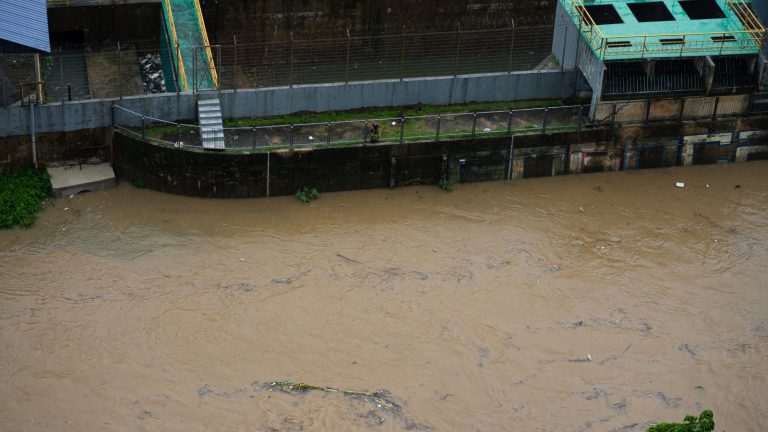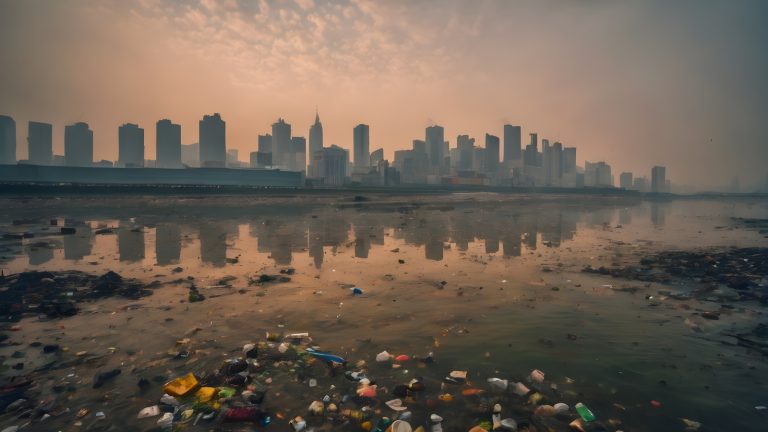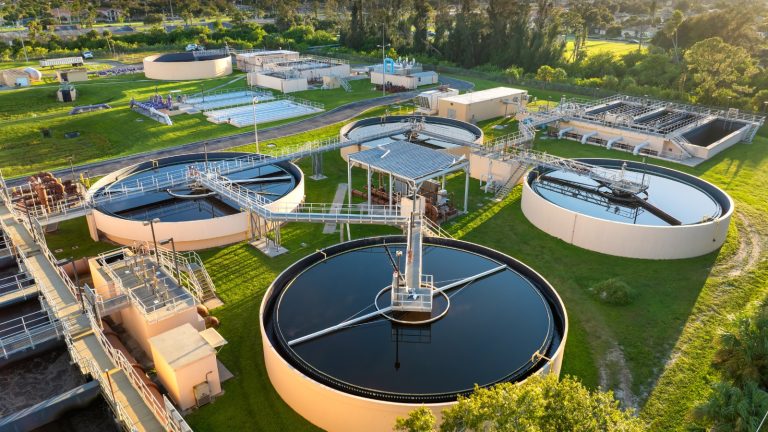Water is another name for the most important resource for one’s life. Human beings mainly utilise it for their necessities such as drinking, cleaning, cooking, and farming. But the problem starts from the fact that not all water is clean. If you clearly observe the water industry, you will notice that one of the major problems facing many countries today is ‘sewage water pollution’. Sewage water, in other words, wastewater, is water that streams down from households, industries, and other places where water has been used and contains waste. When this water is not properly treated, the consequences can be much more dangerous than you ever imagined. It can completely pollute lakes, rivers, and even seep down to the underground water sources.
In this article, we will thoroughly examine ‘sewage water pollution’, exploring its main causes as well as its harmful effects on health, the environment, and society. At the end, we will look at some prevention methods too.
Main Causes of Sewage Water Pollution

Sewage water pollution, unfortunately easy to happen. When harmful substances from different sources blend with water, it just makes it unsafe to use. In the following sector, let us investigate the main causes of sewage water pollution:
Domestic Wastewater
Domestic water consumption is a hidden root that directly contributes to today’s sewage pollution. For example, you can see that water flowing down from kitchens, toilets, and bathrooms carries human waste, oils, leftover food, soap, and detergent. Imagine what would occur if this wastewater seeped straight into rivers or lakes without receiving sufficient treatment! There is a 100% chance that it pollutes the water.
For example, dishwashing soap and detergents are reported to include chemicals that have the potential to harm fish and other aquatic life.
Industrial Effluents
No matter what industry they belong to, all the factories generate a large amount of wastewater, that and the latter is proven to contain hazardous dyes, chemicals, some heavy metals, and other dangerous elements. If the industries do not invest in adequately cleaning this water, it infiltrates rivers, lakes and creates a risky stage for humans and animals.
According to reports, effluent from textile companies has a considerable amount of dyes, which can alter the colour of water. This means that it will restrict sunlight penetration, negatively impacting plant and fish growth.
Stormwater Runoff
During the rain, no need to say that water runs across roads, streets, and buildings. This is when the water blends with dynamic grease, oil, all sorts of debris, and several pesticides from gardens and farms.
When rainfall enters the sewage system, there is a high chance that it carries new toxins into the wastewater. Even while rainwater appears to be clean, it might contain a variety of dangerous pollutants in rivers, in circumstances where authorities do not pay enough attention to controlling it properly.
Improper Septic Tanks and Sewer Lines
Many households utilise septic tanks, and they are utilised to store wastewater. When these tanks are old and leaking, this means that they are poorly maintained. In such situations, untreated sewage can slip into the soil and down into water sources.
Likewise, clogged-up systems will end up overflowing and send out sewage in its raw form onto rivers, streets, or fields. This is a major cause of water contamination in megacities when they do not invest in a proper infrastructure network for handling sewage.
Agricultural Runoff
According to the UN’s Food and Agriculture Organisation (FAO), agriculture remains the principal culprit behind polluted water. Yes, it demonstrates that the farms on the edge of urban areas enormously contribute to sewage water pollution all around the world. Fertilisers, animal waste, and insecticides all run off into neighbouring drains and rivers in the event of heavy rain.
Not to say that they load the water with extra nutrients and hazardous chemicals into water. In one way, it just destroys the stable mix of life in the water; in another way, it keeps harming fish and plants.
Illegal Dumping and Lack of Sewage Treatment
As we look into certain regions, we see that individuals or small businesses keep pouring their wastewater straight into rivers or lakes without filtering it well enough. Furthermore, many cities lack a necessary amount of sewage treatment plants, or they just function with ageing existing plants that are incapable of cleaning all effluent. This is what results in untreated or partially treated sewage getting mixed into the environment.
Major Effects of Sewage Water Pollution

Environmental Effects
Polluted water is not limited to harming rivers and lakes; it spreads towards oceans. If you dive into the roots of this issue, you will locate ‘ eutrophication ‘, which is one of the biggest problems. It occurs if multiple nutrients, varying from nitrogen to phosphorus, flow down from sewage, enter the water.
This will end up causing some serious issues, like excessive growth of algae, and these algae will grow to block sunlight and reduce oxygen levels in the water. The ultimate result would be the low oxygen, which leads to the eradication of fish and other aquatic creatures. It goes without saying that polluted water has negative effects on plants and animals that depend on clean water for survival.
Public Health Impacts
Since the sewage water carries harmful viruses, bacteria, and parasites, it comes with the threat of causing diseases. It occurs when human beings or animals consume or come into contact with polluted water, which leads to illnesses such as typhoid, cholera, hepatitis, and dysentery. In this case, the WHO has identified that children and elderly people are the ones who are especially vulnerable. Also, a broad range of chemical pollutants from industries might cause long-term and serious health conditions such as skin diseases, organ damage, and even cancer.
Economic and Social Consequences
Water contamination comes with a unique and wide range of consequences for communities. You may have noticed that many governments and localities usually spend a significant amount of money to remediate sewage water so that they can ensure it is safe for drinking and other purposes.
On the other hand, people who mainly rely on fishing or tourism may be exposed to lose their livelihoods if rivers or lakes become contaminated. Another fact is that polluted water can also degrade the quality of agricultural land when used for irrigation, reducing food production.
Long-Term Ecological Impact
Sometimes, sewage water pollution can have long-lasting effects on the environment. This means that toxic chemicals and heavy metals can build up in soil and groundwater, and then they become harmful even years later.
It surely destroys the ecosystems, and biodiversity may diminish because some species cannot thrive in polluted environments.
Preventive Measures and Solutions

If the water authorities, municipalities and governments expect to bring down the sewage water pollution levels, it requires effort from all parties. This brings various alliances, such as individuals, industries, and officials. If we break down some important solutions, they will include:
Proper Sewage Treatment: It is a must that wastewater be treated in a properly defined and standard sewage treatment plant before they are released into rivers or lakes.
Maintenance of Septic Tanks and Sewer Lines: If you conduct regular inspections and repairs, it will help you prevent leaks and overflows.
Industrial Regulation: Industries must set standards and treat their wastewater according to regulations and protocols, and follow environmental laws.
Rainwater Management: Proper drainage systems are a versatile concept when preventing polluted stormwater from entering water bodies.
Public Awareness: No matter what efforts you put in, if you do not educate people about the importance of clean water and about how to dispose of waste properly, it will never reduce domestic pollution rates.
Reducing Sewage Water Pollution Using AI Technology

Sewage water pollution is one of the severe issues the world faces, which harms the environment, health, and economy all at the same time. If you wish to prevent sewage water pollution in your region or city, what you actually need is a collaborative effort from all the parties concerned to adapt new AL-powered water technologies.
Tigernix Smart Water Asset Solution is the best answer to decrease the sewage water pollution in any region, as it is powered by Industry 4.0 capabilities such as AI, IoT, Digital Twin, Predictive Maintenance, and GIS. Since our solution can predict water polluting areas, map them out on screens, analyse data volumes, and help with maintenance of pipes and other mechanical assets, you can easily bring down the water pollution to zero in a short while.
Tigernix for a Water Pollution Free World. Call for a free demo.







